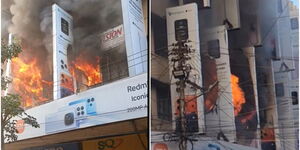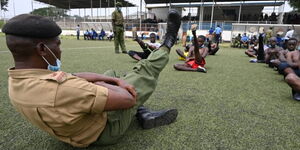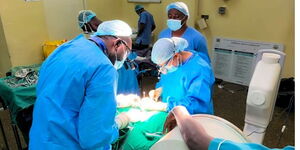One of the most common visible features at the Jomo Kenyatta International Airport (JKIA) is the winglike extensions which protrude from the terminals.
The extensions are known as airbridges and serve five main functions, including security purposes.
Kenyans.co.ke details five functions of the airbridges, which can also be referred to as sky bridges, jet bridges or jetways.
Boarding Planes
The primary goal of an airbridge is to aid passengers in boarding planes easily. On most occasions, most airlines have to use movable staircases to enable passengers to board and alight from a plane.
However, with airbridges, the plane's doors are usually connected to the bridges to allow the passengers to walk directly into or out of the terminal.
Therefore, when the plane is dropping off passengers, it parks next to bridges connected to the arrival terminals and vice versa.
Protection
Apart from helping passengers board the planes, the bridges also protect them from harsh weather conditions such as heavy rains or excessive sunlight.
This is made possible because the airbridges are usually enclosed box-shaped extensions.
Through this functionality, airport operations can also continue smoothly without interruptions from the rain or excessive heat from the sun's rays.
Save Costs
Airbridges are an alternative to mobile staircases, which are electric and need power to operate.
The extensions, therefore, eliminate the need to use power for such purposes.
On the other hand, with airbridges, one does not need to have airport officials manning the stairwell to ensure that there is smooth boarding and offboarding of the plane.
Security
"Requiring passengers to leave the airport terminal to walk to the aircraft also means that the travellers have been granted temporary access to a restricted area of the airport.
"The use of airbridges eliminates the potential security risks associated with passenger access to the ramp," SjyLibrary explains on its website.
Additionally, it is easy for airport officials to monitor the movement of passengers walking on the airbridges as compared to the staircases.
Maintainance
Additionally, the airbridges make it easier for engineers and technicians to monitor and carry out repairs on the plane's fuselage.
However, despite being advantageous to airport operations, the airbridges have some disadvantages, including damage to the fuselage because of the constant contact with the plane's body.
Other parts of the plane that can get damaged in the process are the plane doors. Smaller planes can also not use airbridges because they have their inbuilt staircases.












